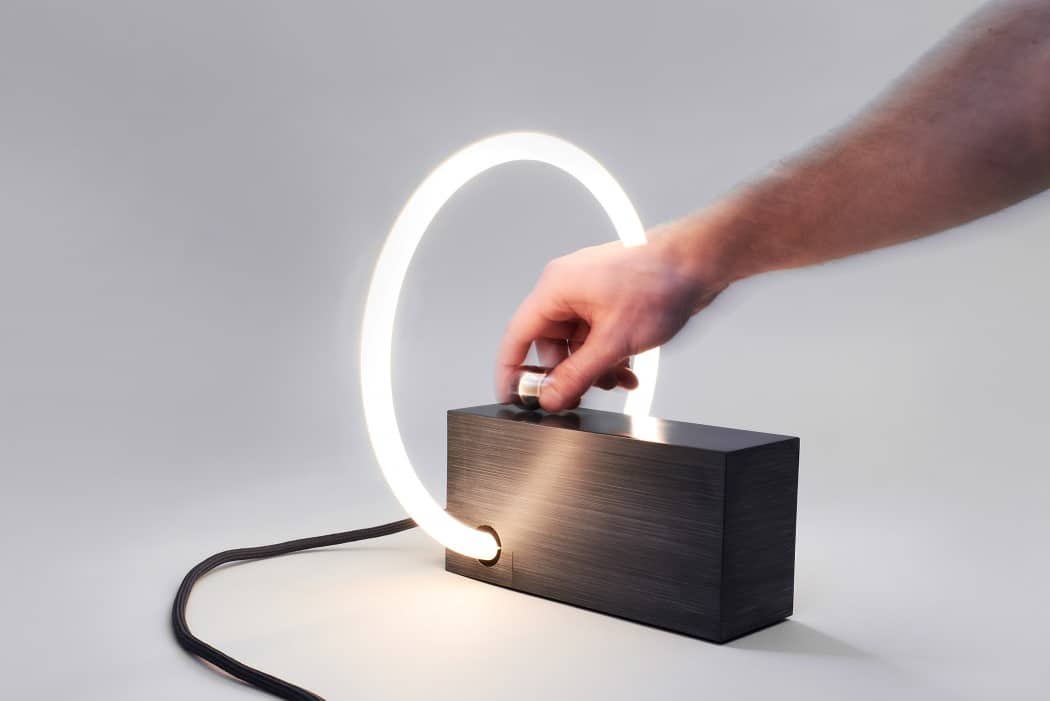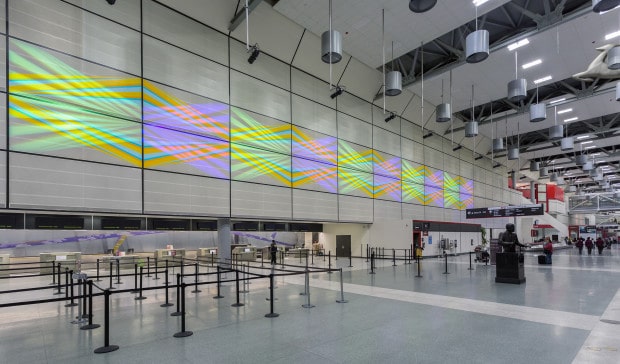
I’ve done a lot of shows in my career so far. I’m lucky as hell, don’t get me wrong – but because of it, I feel like I have a real “bond” with incandescent and high-intensity discharge lamps (HIDs) that we use in this industry. It’s almost creepy sometimes – in my head, I know how a good ol’ no-color Source Four looks in a dark theatre. I know how an Altman 360Q looks in a theatre sitting next to it, too – and how it looks sitting with a Shakespeare, also uncorrected, next to a Source Four. As I close my eyes to write this, I can see how an old Strand 30-degree feels inside of a theatre or outside during an outdoor performance, and how a tried-and-true PAR64 can burns so beautifully bright and amber when it’s going through red shift during a nice slow fade-up during a song in an arena. Even awesome old Kliegl 6×8’s have a good beam still, as long as the optics are changed from those miserable step lenses!
As a side note, I listened to Vesa Honkonen tell a story when I was attending graduate study in Sweden about “trusting” the light from a certain type of reflector, and how that trust cost him time and money on a project. So as a bit of an aside, with every statement is an equal anti-statement!
I have gotten to know the fixtures in our industry very well because I’ve been fortunate to use them in a real variety of performance situations and installations. When you get to know something like an ellipsoidal fixture with an incandescent lamp in it and you use it over and over and over again, you get to trust the fixture. I can say with ease that I trust the light that comes from the business end of a Source Four; at the same time, I trust the light that comes out of an Altman 360Q as well, whether it has an HX601 lamp in it or an old FEL lamp. As a designer, as an artist – I know what that light from an incandescent lamp in one of the “typical” variety of ellipsoidals is going to do for me in a scene on actors of any skin tone, or on a presenter during, or on film and video, and whether it has a chunk of R26 or L181HT in it. I know that kind of light. I trust that light.
In the world we live in now, incandescent lamps are slowly becoming forcefully shunned by a growing portion of the lighting industries as a whole (and politicians, sadly), with LED replacements becoming the forced norm by pretty much all of the companies that at one time were pushing an incandescent based fixture. These companies are all now driving quickly on the road of a really good trend: to produce a fixture that provides the same kind of light or better than that of an incandescent lamp based fixture with a lot less power consumption and without losing any light quality. Sounds easy enough, right?
There is a strange, edgy, “new car smell” feeling towards the new strains of LED fixtures making their births into the industry. We are inundated with them at the trade shows in our business, just like we were with the incandescent conventionals. Manufacturers, this is perfectly acceptable, and I think that it’s one of your biggest assets in this industry. It’s your job to make us trust your fixtures, through hands-on videos and “shoot-outs” between incandescent and LED fixtures out there. My informal surveying of conference attendees over the last three years has seen many responses like “TOO MANY LEDS” and “If I see another crappy wannabe LED fixture at another trade show, I’m going to die.” Believe it or not, this is a really good thing — it provides an opportunity for the exceptional equipment to rise to the top of the Diode Ocean, as I like to call it. Lately, these exceptions are overcoming their inferior rivals, much to my happiness.
Users, we have a job to do, too – we have to give the manufacturers the chance to trust LED light. We have to learn how it is different than its incandescent counterparts. We’ve had all of these decades to learn how to work with incandescent light (and HID light too, for what it’s worth), and we know it. We trust it, and we love it. But why is that? It’s because it’s what we know, and it really is that simple. Once we give the LED ellipsoidal generation a chance, you know we’re going to trust that too. This isn’t to say that LEDs are done developing, this obviously isn’t true. But I am noticing some unbelievably incredible advances in LED engines and output technology lately, especially after LDI in October 2012, and I have to say that I am finally ready to learn to trust LED conventional ellipsoidals. It’s hard not to at this point to see that LED ellipsoidals are becoming the obvious choice, with the color temperature tuning we see now and the low power requirement that they provide — and to argue against energy consumption and power conservation is just not in my DNA.
Over the next 2 weeks I’m going to be comparing the LED conventional ellipsoidals we see in Entertainment to their incandescent counterparts over the next month, starting with ETC’s new Source Four LED line first, followed by Robert Juliat’s Zep and Tibo ranges, then moving on to the RevEAL Profile from Prism Projection, and so on. In the mean time, let’s take a look at the characteristics I’ll be examining that I find important to applying trust, at least on paper – you can argue that there are more to see, but for the sake of argument, let’s start with:
- Cost Comparison:
What kinds of costs are we looking at over the course of an LED Ellipsoidal lifetime? How different is it, really? - Light Output, or Perceived Brightness:
How does it compare to a comparable incandescent conventional? - Spectral Analysis:
What is the white light in the beam comprised of with respect to wavelength? - Power Consumption:
When you put an LED ellipsoidal up against an incandescent lamp at 575W, how does it perform? - Weight:
I have to stick these in a truck and on a truss at some point, so what is the difference I need to know? - Controllable Properties:
Obviously I have only a few with an incandescent fixture, so what comes stock in an LED ellipsoidal that makes a difference?
Let’s go on this journey together. When we work on something together as an industry, we get to make it how we want it to be, and manufacturers listen. Once we started to get involved with the ways that incandescent lamps were developed and lighting designers started demanding better control over design and engineering of incandescent lamps, they improved. All we have to do now is learn what the LED Ellipsoidal generation can do for us, and we can really make a difference.





I am really looking forward to the LED series. I have an installation of old lights, old scrollers and old dimmers in my HoW. I have been trying to figure out if it is now time to leap.
Jim, bravo! I look forward to reading what you find.
One further thing you should look at is the temporal aspect. If an LED source is dimmed using phase-angle dimming or its own PWM system it could flicker. If you have fast moving subjects (e.g., dance) this could cause strobed motion.
Consider it added. I’ll make a side findings report out of it and a few other things not in the main categories I want to talk about. Got any other suggestions? Thanks for THIS one!
Comments are closed.